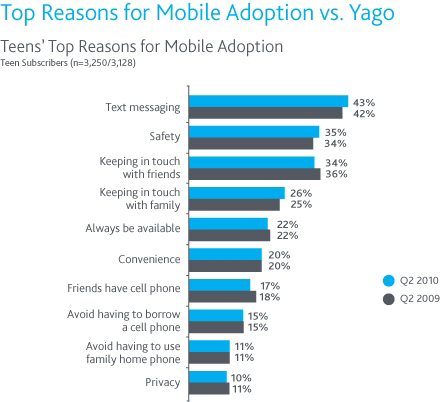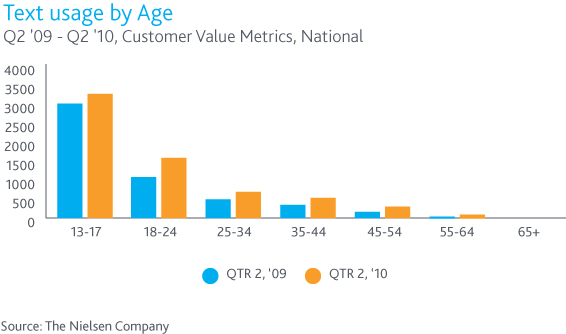 How did we get from a time when our earliest ancestors had to pack a lunch and roam around looking for someone to talk to, to 10,000 texts a month?
How did we get from a time when our earliest ancestors had to pack a lunch and roam around looking for someone to talk to, to 10,000 texts a month?
Let’s do some math:
- Average month – 30.42 days
- 10,000 texts per month; 329 per day; 18 per hour (18 hour day – everyone sleeps); 1 per 3-4 minutes
- 3,500 texts per month; 115 per day; 6.5 per hour; 1 per 10 minutes
This does not include reading, composing, sending time, and mental waiting time. Those statistics really irritate some people as an inappropriate use of time. Texting does not make sense to them.
But texting may not be just about sense. It may be about the instant gratification you get when there is a response to a text – the anticipation, the interaction, the speed; the endorphins that are released. I’d like to see how the frontal cortex explains 10,000 texts a month other than – it can be done, and, it really feels good. That makes sense.
Nielsen Wire reports some interesting patterns:
Usage is up from last year in all categories. Even those users in their early fifties are averaging 15 – 20 texts per day.
 It looks like teens are using text messaging to let Mom and Dad know that they arrived safely at their destination.
It looks like teens are using text messaging to let Mom and Dad know that they arrived safely at their destination.
Just as an aside, the Henry J. Kaiser Family Foundation reports that young and teen-aged users can pack more than 10.75 hours of media use into 7.5 hours per day. Wow! Talk about multi-tasking.
So, people, especially the youngest generations who will be the new workforce in 10 years; are getting jazzed by a device that is small, vibrates, and runs on batteries. What can we learn from this?
Texting is here. In certain groups, it is ingrained in the brain. The two highest use groups (13-17 & 18-24) are in the midst of their own brain development. It will be interesting to see what impact this has on the types of rewards members of these groups will expect, or seek, as they mature into adulthood. If you are in one of the groups that text less, you may have to increase your use to get the high user’s attention. If you do not text, you may need to start to take advantage of communications opportunities that presently exist for different age groups.
That does not mean, however, that we completely give into our mid-brain. The Henry J. Kaiser Family Foundation reports that when parents set media use rules, children respond by dropping media use by more than half when compared to children whose parents do not establish rules. Further, light media users report higher grades than heavy media users.
The challenge is to establish appropriate ground rules that allow us to take advantage of new media without succumbing to their instant gratification. Those of us in the lower use age groups can let our mid-brains react by getting angry, but we would do better to spend some time understanding the phenomenon and helping to establish a culture of use that leads to better work outcomes.
What’s been your experience?

by Julie McKercher
12 Jan 2011 at 08:57
I do believe that there are good uses of texting in the social world as it relates to commuincation. Additionally, I believe that with time and money, it will be a valuable tool for communicating to the business community as well as Public Safety.
As a manager, it is problematic to keep texting under wraps while employees are in a workspace. It is similar to excessive personal phone calls on the job. It is a distraction to not only the employee who engages but also one that may be sitting in the same room listening to the ring-tones or vibrating sounds.
I guess the old saying still stands. There is a time and place for everything.